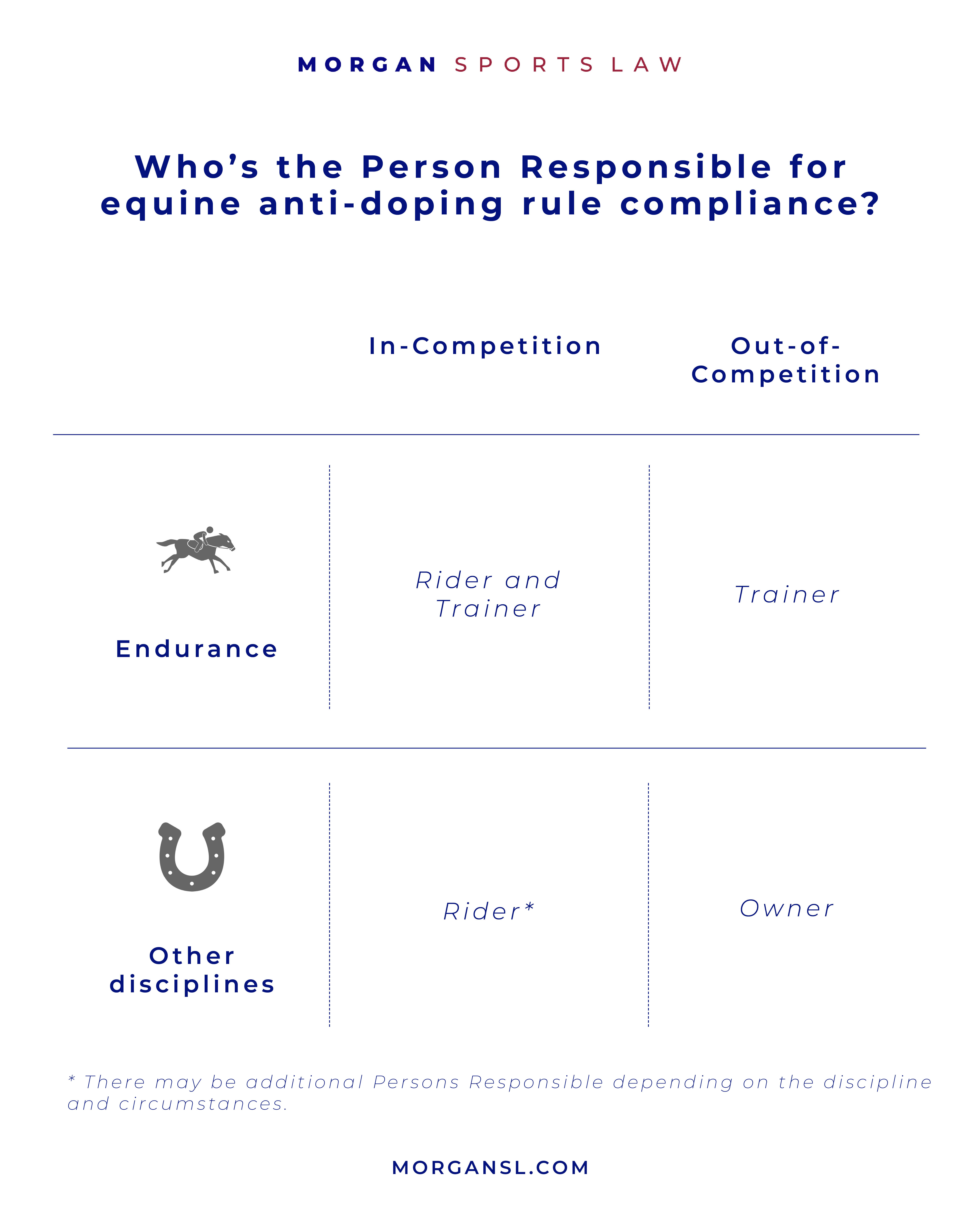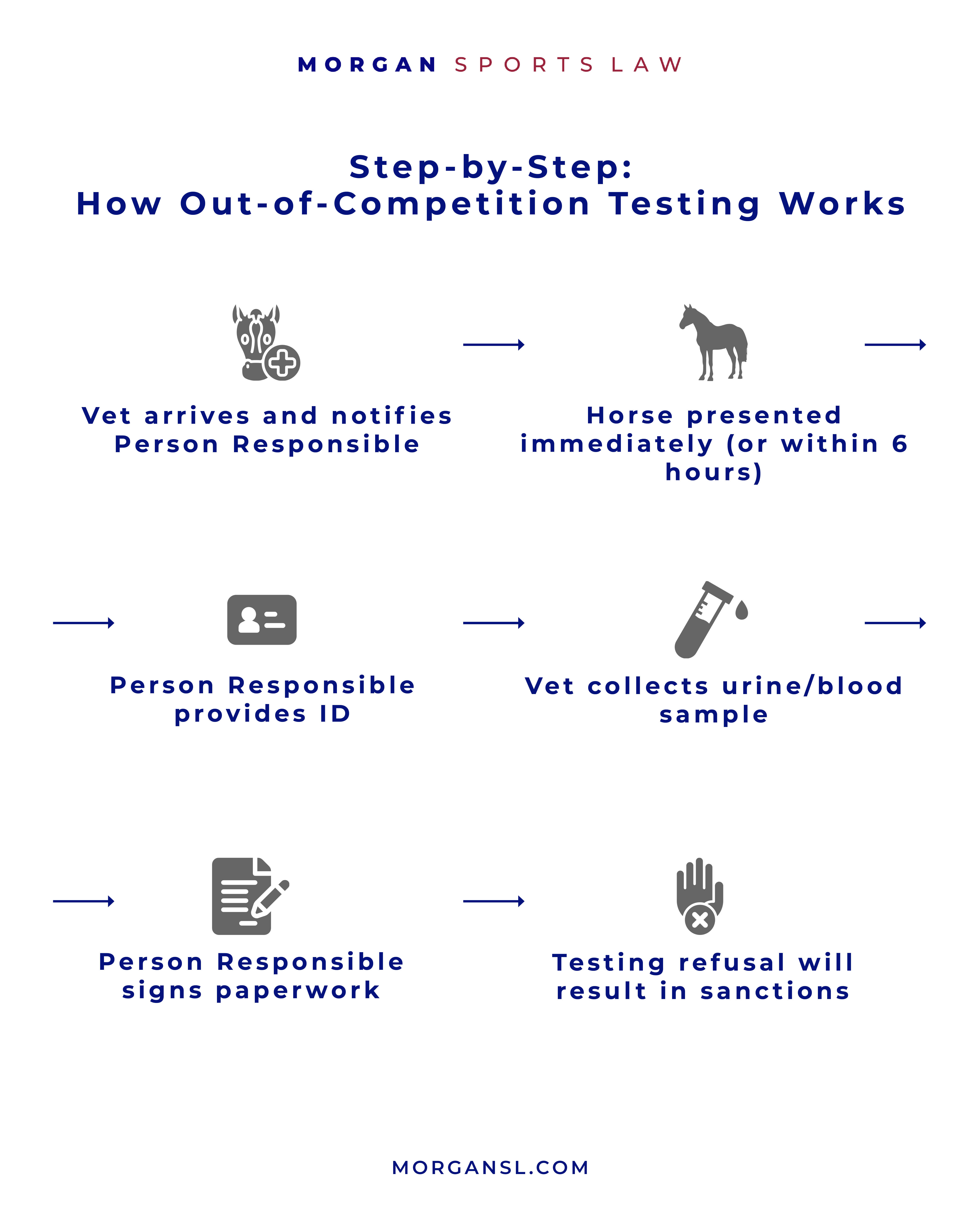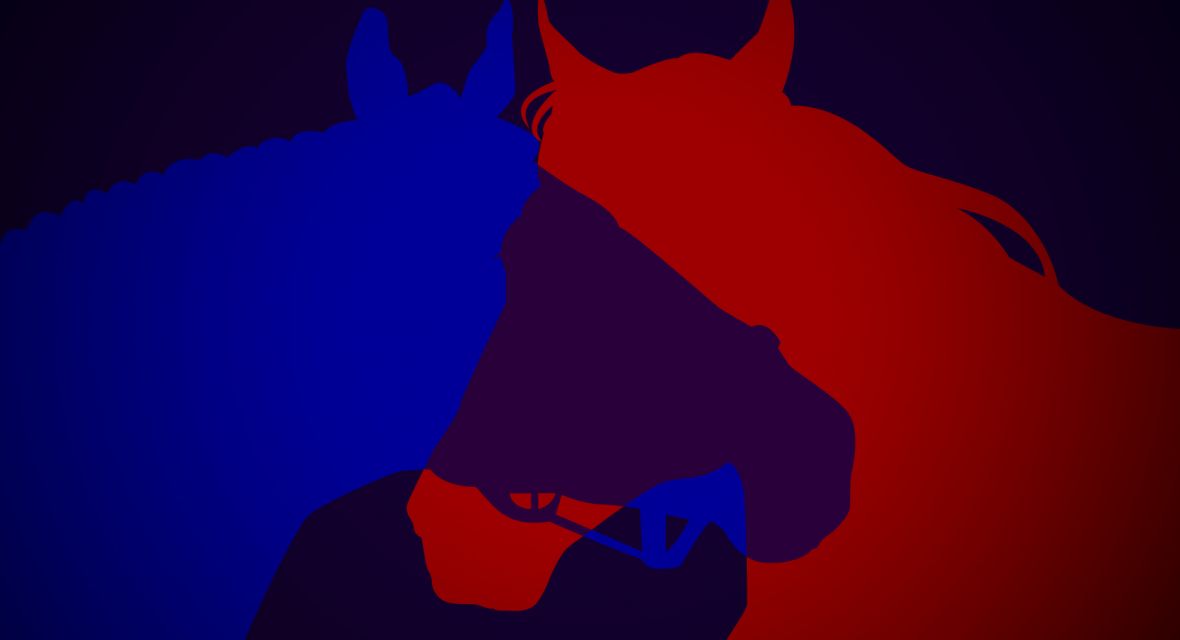FEI’s new out-of-competition testing rules – what you need to know
What’s new?
From 1 January 2025, the FEI has introduced a formal system for out-of-competition (“OOC”) anti-doping testing in horses. This means horses can now be tested for banned substances even when they are not competing – similar to in human sport.
Previously, OOC testing was permitted under the FEI rules but there was no clear structure for how it would work and the FEI never actually tested horses outside of competition. This meant horses could potentially be given banned substances that might no longer be detectable by competition time. The new rules aim to close this gap, protect horse welfare, and improve fairness and integrity in the sport.
While there have been no reports of positive (or negative) OOC tests yet, everyone who works with FEI horses should be aware of the new OOC rules, to prepare for such testing to take place.
Who is responsible?
The Person Responsible (“PR”) is the individual in charge of the horse’s compliance with the rules, and as such, they are also held accountable in case of a rule violation involving that horse.
For in-competition testing, the PR is the rider – though there may be additional PRs depending on the discipline and the circumstances (for example, in endurance, the trainer is an additional PR).
For OOC testing, it depends on the discipline. For endurance, the PR is the trainer. For all other disciplines, the PR is the horse’s owner.

Which horses will be tested?
Any horse registered with the FEI and/or a National Federation can theoretically be tested out of competition – and, to assist with this, the FEI is entitled to request information about a horse’s location and even track it using FEI apps.
Further, the FEI may allocate certain horses to “testing pools” – and in those cases, the PRs would be required to provide regular information to the FEI about the horse’s whereabouts (similar to in human anti-doping).
While the FEI has not revealed the exact criteria for including horses in the testing pools, they would likely be based on factors such as performance rankings and/or a history of anti-doping rule violations. PRs will be notified if their horse is included in one of these pools.
However, so far, the FEI has not confirmed that it has established any testing pools – and it may simply operate OOC testing on an ad hoc basis (perhaps based on anti-doping intelligence) to begin with.
What happens if the rules aren’t followed?
Non-compliance with the OOC rules could result in sanctions for the horse and/or PR.
If, on three occasions in a 12-month period, a horse’s whereabouts information is not completed properly (or at all) when required and/or the horse misses an OOC test:
- The horse will be suspended for up to two months – though this may be reduced to a minimum of a warning, depending on the PR’s level of fault.
- The PR could face sanctions – but only if there is evidence of another violation, e.g. intentionally refusing to allow a sample to be collected from a horse.
Further, if a horse tests positive for a banned substance after an OOC test:
- The horse will be suspended for two months.
- The PR will face sanctions such as a suspension and fine (as they would for a positive in-competition test).

How does the testing work?
- A testing veterinarian will visit the location where the horse is meant to be – and will notify the PR that the horse has been selected for OOC testing.
- The horse must be made available for testing immediately – or within six hours, if not immediately available. This can be further extended in extenuating circumstances.
- The PR must present valid ID for themselves and the horse.
- The testing veterinarian will collect a sample of the horse’s urine and/or blood.
- At the end of the process, the PR must sign forms to confirm and acknowledge sample collection.
- Refusal to participate in any aspect of the procedure could result in sanctions (as noted above).

Challenges
The introduction of structured OOC testing in horses presents various legal and logistical questions:
1. Tracking whereabouts
Horses may be under the care of multiple individuals in different locations at various times. This makes it difficult to ensure consistent and accurate whereabouts reporting.
Further, some horses may train over large areas (particularly in disciplines like endurance). This is presumably why the FEI has allowed significant flexibility if the horse is not immediately available for testing.
2. Access to private properties
Some have complained about whether the FEI (and its testing authorities) have a right to access private properties, such as stables, to carry out OOC testing.
Given the serious consequences if a PR refuses to allow OOC testing to go ahead, there may be challenges to the FEI’s authority to enter private properties.
3. Who is responsible?
It’s not always clear-cut who should be held accountable for a rule breach – especially when multiple people are involved in a horse’s care at different times. Disputes about this may arise among riders, owners, trainers and other support personnel.
Final thoughts
The new rules on OOC testing are a big step forward in strengthening the FEI’s commitment to horse welfare, fairness and integrity in equestrian sport. However, they raise some practical and legal questions that may need to be ironed out.
Authored by
Ellen Kerr
Associate
Alice Marcossian
Trainee Solicitor
If you have any questions about OOC testing, or the regulation of equestrian sports in general, please contact Ellen Kerr, Associate on +44 7487 702 114 or ellen.kerr@morgansl.com.


